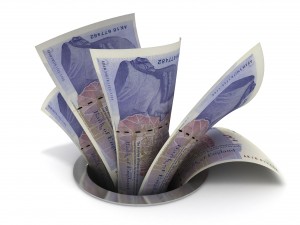Getting a Grip of Pricing in an International Group
Often clients come to us determined to enforce some sort of central pricing discipline on their overseas subsidiaries, convinced that they are leaving money on the table. Anyone who has ever run an international group (that’s what I was doing ten years ago before I set up Burgin Associates), knows that controlling policy on anything is like keeping a gang of frogs in a wheelbarrow.
A client with just such ambitions approached us the other day and I put together a short paper for them offering advice on the potential pitfalls. I thought you might like to see it.
Autonomy and Profit Centres: You expect General Managers to deliver profit. Price is one of their key levers although often badly used. Simply taking responsibility for pricing away from them back to the centre would stir howls of dissent if they are worth their salt as managers. Bringing them alongside the process and helping them understand how it works and what it can deliver for them is the key. Initiatives in the first instance should be advisory rather than mandatory. Any subsequent shortfall in their profit performance can then be used to drive the policy in place …”If you had done what we suggested on price in the first place….”.
“It is different here”: At least one overseas operation will tell you that their market is fundamentally different in some way. All markets are slightly different and the central marketing function ignores this at its peril. We have seen product launch initiatives fail because the sub-pack size did not work with the peculiar conditions in retail in a territory. However, more often than not this is a political signal to ‘stay out of my business’. A subtle, more advisory approach, often lower down the subsidiary’s organisation will overcome this so long as the General Manager is kept in the loop.
KPIs and Incentives: We have seen the way that salespeople and management are measured completely undermine pricing initiatives. The obvious toxic combination is; discretion to set price but measured on sales volume or value. Aligning KPIs with profit objectives combined with modelling the effect price has on profit performance is a key driver of appropriate behaviour…. “Look how much money you can make if you get it right…”
Cognitive Bias: There is an inherent cognitive bias relating to pricing that hampers almost all organisations. There is a belief that the market is more price-sensitive than it actually is. The primary reason for this is nobody tells you when you are too cheap, so the groundswell of anecdotal feedback from the market is that you are price positioned higher than you should be. This leads to a belief that the market is more price elastic and that a cut in price will drive volume. For a variety of reasons this is nearly always wrong. For instance it assumes that competitors will not cut price in response (see Sweezy’s kinked duopoly model 1939). Price is the leading excuse for poor sales performance and the desperation manifests itself in calls for cost to be stripped out of the upstream operations. This is exacerbated by a panic at senior level about sales volumes.
Rule of Thumb and No Science: Price setting in smaller organisations like local profit-centres is seen as a black art only based on experience. We seldom see subsidiaries deploying market tests or careful measurement to determine accurate price positions. Some will avidly collect competitor price information but forget that the consumer does not see this level of detail. If you have 15 competitors in a territory but stockists only stock one manufacturer’s range, then the share decision is not made by the consumer (unless they choose a store based on the product in question). In this instance a higher RRP makes the retailer or distributor more money.
The Retailer or Distributor as the Customer: Smaller operations particularly with a limited share of retail presence, will regard the retailer as the customer rather than the channel to the customer. As you know, the mindset of a brand is that they own the consumer and this strength should make retailers hungry to stock their wares. Limited marketing budgets in smaller territories mean that building brand awareness is a luxury they cannot afford. Support from the centre, a strong brand-driven culture will help change this perspective.
Footnote: Strong brands, no matter how nice their people are, will always be considered as arrogant by retailers and distributors. This is simply an expression of their limited power to negotiate with you. Calling the shots on RRPs (in a legal way) is sometimes seen as arrogance. This has to be assuaged by demonstrating the superior profit opportunity it offers.
The moral of the story is: Tread carefully lest you give your subsidiaries the very best of excuses for not selling enough.
